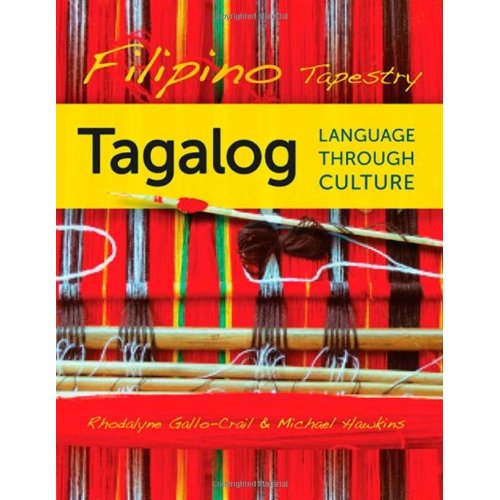
For more information regarding publicity and reviews contact our publicity manager, phone: (608) 263-0734, email: publicity@uwpress.wisc.edu
Of related interest:
Filipino Tapestry Audio
Supplement
To accompany
Filipino Tapestry, Tagalog Language through Culture
Rhodalyne Gallo-Crail and
Michael Hawkins
This audio CD is a central component of
the lessons in the textbook Filipino Tapestry, which offers an
innovative approach to learning language by emphasizing the critical
intersection of language and culture. Together, the book and CD provide
activities and exercises that immerse beginning and intermediate students of
the Filipino language in a variety of authentic situations to simulate an
in-country experience.
SUGGESTED INSTRUCTIONAL
MATERIALS FROM YOU TUBE LINKS
Lesson 2 (Pagsakay ng Dyip): Reading: Limang Dipang Taong by Ryan Cayabyab
https://www.youtube.com/watch?v=0tpJ7OPq__s
https://www.youtube.com/watch?v=e3KG-g6bnvs&feature=related
Lesson 3 (Pamilya): Listening and Writing: Anak Song by Freddie Aguilar
https://www.youtube.com/watch?v=aXEiOyi071I&feature=related
https://www.youtube.com/watch?v=aXEiOyi071I&feature=related
Lesson 4 (Barkada): Reading: Awit ng Barkada by Apo Hiking Society
https://www.youtube.com/watch?v=-qErrYUbj10
https://www.youtube.com/watch?v=1Ql-M2lTZ8E&feature=related
Lesson 5(Bahay) Reading: Bahay by Gary Granada
https://www.youtube.com/watch?v=j6QF_yyjpS0
https://www.youtube.com/watch?v=LF1ELJUhNYQ&feature=related
Lesson 6 (Pamamalengke) Reading: Tinadan ni Aling Nena
https://www.youtube.com/watch?v=tqGNRzUvQMg
Lesson 9 (Pagsamba): Reading: Sana by FLorante
https://www.youtube.com/watch?v=baLRvSBEkA4&feature=related
https://www.youtube.com/watch?v=pW3YNOewyWE&feature=related
Lesson 15 (Pangingibang Bansa): Speaking/Listening Oral Discussion Caregiver (Movie)
https://www.youtube.com/watch?v=ZvIwkxmcDwY (part 1)
An official language of the Philippines, Filipino is based on Tagalog, with elements of Spanish, English, and Chinese mixed in. The result is a rich, expressive language spoken in the Philippines and throughout the far-reaching Filipino diaspora.
Filipino Tapestry offers an innovative approach to learning language by emphasizing the critical intersection of language and culture. It provides activities and exercises that immerse beginning and intermediate students of Filipino in a variety of authentic situations to simulate an in-country experience. Starting with chapters on such topics as family, friends, and home, it then expands the student’s world in chapters prompting conversation about food, shopping, parties, and pastimes. Its later chapters push learners to discuss city and country life, cultural traditions, religion, history, and politics.
Features include:
• background chapters on phonology, sentence construction, and common expressions
• photos and cultural notes about chapter themes
• grammar, reading, listening, and speaking exercises
• glossaries of words and additional expressions.
Rhodalyne Gallo-Crail
teaches Tagalog at Northern Illinois University and speaks the language
natively. Michael Hawkins, who learned Tagalog by immersion
in the Philippines, is assistant professor of Asian history at Creighton
University.